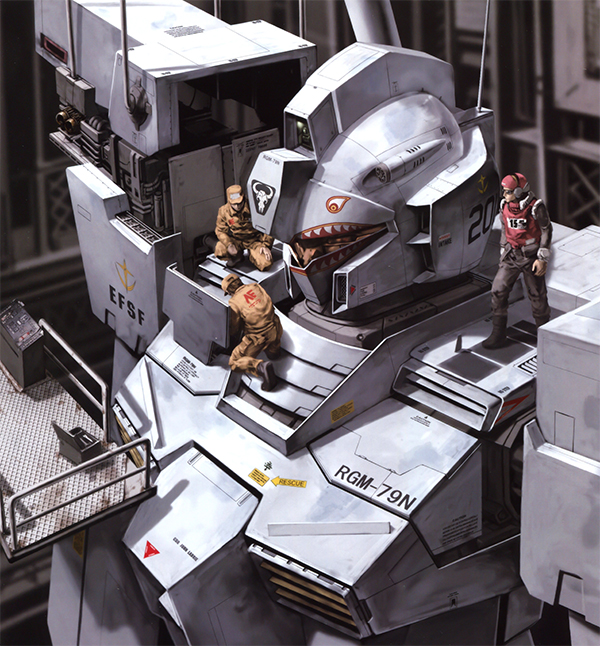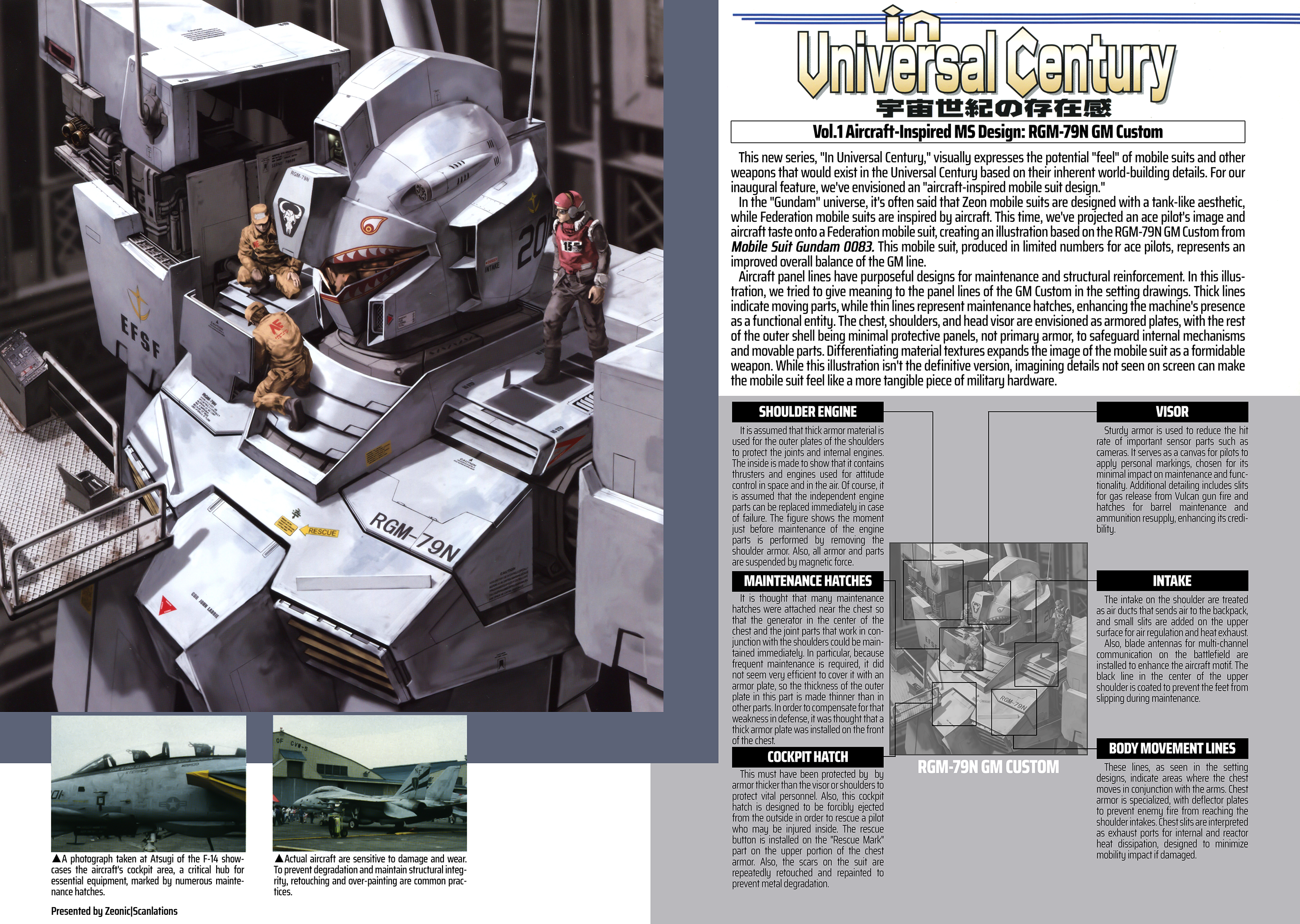Vol.1 Aircraft-Inspired MS Design: RGM-79N GM Custom

Vol.1 Aircraft-Inspired MS Design: RGM-79N GM Custom
This new series, “In Universal Century,” visually expresses the potential “feel” of mobile suits and other weapons that would exist in the Universal Century based on their inherent world-building details. For our inaugural feature, we’ve envisioned an “aircraft-inspired mobile suit design.” In the “Gundam” universe, it’s often said that Zeon mobile suits are designed with a tank-like aesthetic, while Federation mobile suits are inspired by aircraft. This time, we’ve projected an ace pilot’s image and aircraft taste onto a Federation mobile suit, creating an illustration based on the RGM-79N GM Custom from Mobile Suit Gundam 0083. This mobile suit, produced in limited numbers for ace pilots, represents an improved overall balance of the GM line.
Aircraft panel lines have purposeful designs for maintenance and structural reinforcement. In this illustration, we tried to give meaning to the panel lines of the GM Custom in the setting drawings. Thick lines indicate moving parts, while thin lines represent maintenance hatches, enhancing the machine’s presence as a functional entity. The chest, shoulders, and head visor are envisioned as armored plates, with the rest of the outer shell being minimal protective panels, not primary armor, to safeguard internal mechanisms and movable parts. Differentiating material textures expands the image of the mobile suit as a formidable weapon. While this illustration isn’t the definitive version, imagining details not seen on screen can make the mobile suit feel like a more tangible piece of military hardware.
![]()
SHOULDER ENGINE: It is assumed that thick armor material is used for the outer plates of the shoulders to protect the joints and internal engines. The inside is made to show that it contains thrusters and engines used for attitude control in space and in the air. Of course, it is assumed that the independent engine parts can be replaced immediately in case of failure. The figure shows the moment just before maintenance of the engine parts is performed by removing the shoulder armor. Also, all armor and parts are suspended by magnetic force.
MAINTENANCE HATCHES: It is thought that many maintenance hatches were attached near the chest so that the generator in the center of the chest and the joint parts that work in conjunction with the shoulders could be maintained immediately. In particular, because frequent maintenance is required, it did not seem very efficient to cover it with an armor plate, so the thickness of the outer plate in this part is made thinner than in other parts. In order to compensate for that weakness in defense, it was thought that a thick armor plate was installed on the front of the chest.
COCKPIT HATCH: This must have been protected by by armor thicker than the visor or shoulders to protect vital personnel. Also, this cockpit hatch is designed to be forcibly ejected from the outside in order to rescue a pilot who may be injured inside. The rescue button is installed on the “Rescue Mark” part on the upper portion of the chest armor. Also, the scars on the suit are repeatedly retouched and repainted to prevent metal degradation.
VISOR: Sturdy armor is used to reduce the hit rate of important sensor parts such as cameras. It serves as a canvas for pilots to apply personal markings, chosen for its minimal impact on maintenance and functionality. Additional detailing includes slits for gas release from Vulcan gun fire and hatches for barrel maintenance and ammunition resupply, enhancing its credibility.
INTAKE: The intake on the shoulder are treated as air ducts that sends air to the backpack, and small slits are added on the upper surface for air regulation and heat exhaust. Also, blade antennas for multi-channel communication on the battlefield are installed to enhance the aircraft motif. The black line in the center of the upper shoulder is coated to prevent the feet from slipping during maintenance.
BODY MOVEMENT LINES: These lines, as seen in the setting designs, indicate areas where the chest moves in conjunction with the arms. Chest armor is specialized, with deflector plates to prevent enemy fire from reaching the shoulder intakes. Chest slits are interpreted as exhaust ports for internal and reactor heat dissipation, designed to minimize mobility impact if damaged.
![]()





